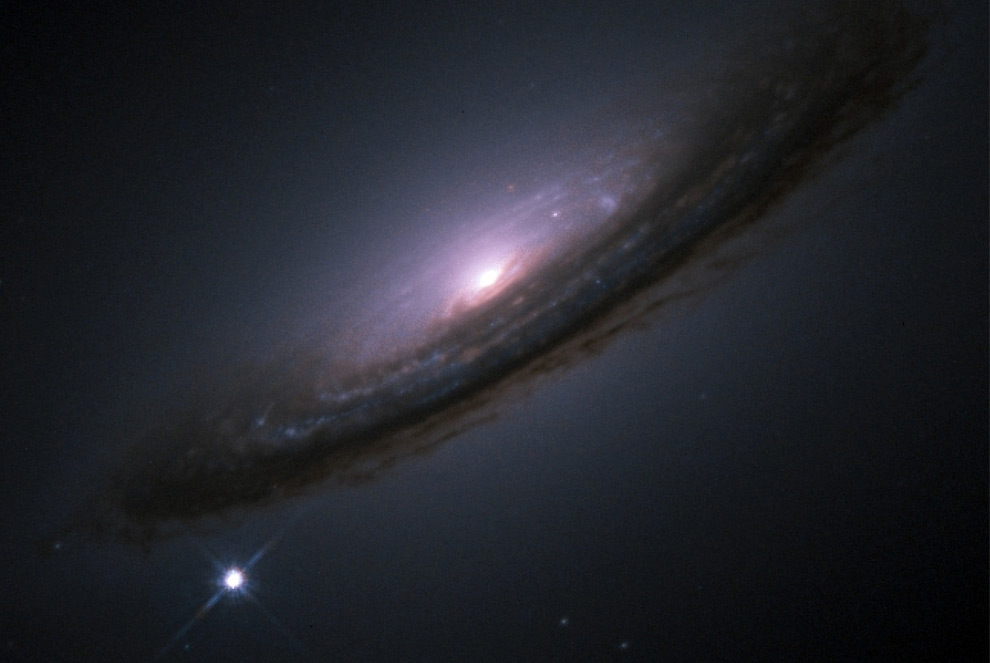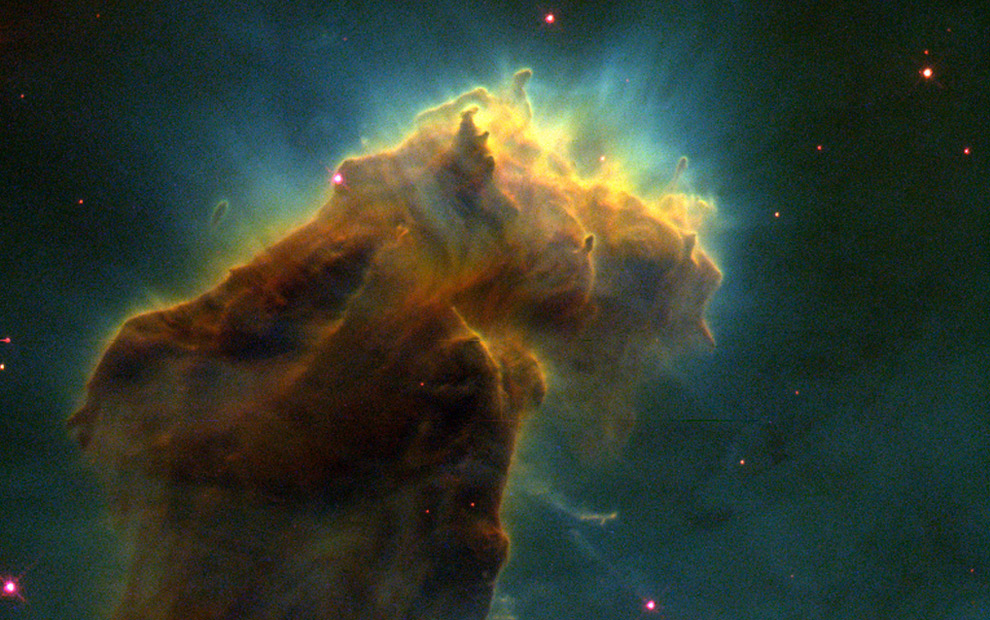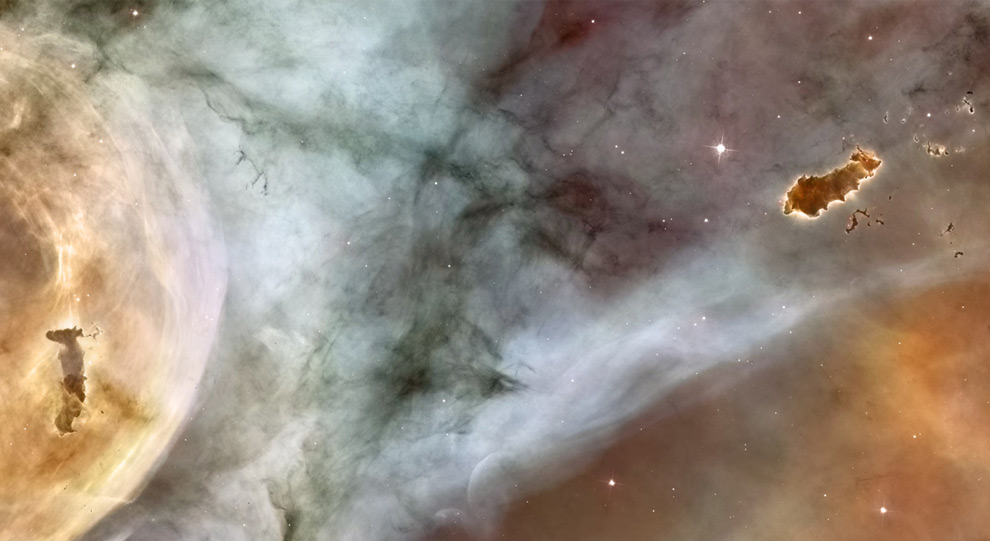Agencies will increasingly act as marketing communication strategy consultants as a premium complementary offering to their production and campaign development services.
Some contemporary agencies have even stripped out the tangible production aspects of their operations (such as the art studio) to concentrate on the development of a ‘big idea’ for creative execution. These agency forms utilize traditional resources including consumer research departments, account management teams, and creative developers, in addition to unconventional resources like artists, futurists, and cultural anthropologists.
These agencies recognize that in a new world where marketing communications must be far more relevant to consumers and impressions must not be squandered, the classical rules of planning, designing, and executing an advertising campaign must be challenged.
As these new capabilities are being internalized to qualitatively improve the effectiveness of marketing communications campaigns, agencies are also seeking to integrate customer relationship management practices to quantitatively improve the creative product. Customer learnings from CRM data, drawn from multiple online and offline communication channels, serve to develop active relationships between brands and their customers. Small, boutique marketing strategy firms, mid-sized agencies, and large networked global agencies have all significantly invested in developing these capabilities.
Historically, the advertising agencies industry was characterized by a few large global agencies (some affiliated through one of the five large holding companies) and by many small boutique agencies that operated locally.
Beginning in the 1990s, mid-size agencies have risen to challenge large global players for major accounts and the ability to define client marketing communication strategy. These mid-sized agencies, such as Wieden + Kennedy, 180, M&C Saatchi, Crispin Porter & Bogusky, and StrawberryFrog, position themselves as being better able to develop a strategic creative ‘big idea’ because their operations are more nimble and culturally oriented than large agencies like Young & Rubicam, BBDO, or JWT.
This industrial niche grew in importance because large agencies could not rapidly adapt to a changing consumer marketplace beginning in the 1990s and continued to exist as large-format multinational campaign production houses, giving their big ideas away for free.
Networks of agencies will continue to develop in the future, however the size and scope of these networks will likely not be based on the number of markets in which an agency can self-replicate and continue to amass global client billings, but rather based on the appropriateness of new markets which have a strong global influence.
Today, when mid-sized agencies go abroad, they locate to worldwide cultural centres where there is a wealth of diverse creative talent. Shanghai, Sao Paulo, Amsterdam, Los Angeles, and Mumbai are all rapidly growing locations for this new breed of marketing agency. Locating in cultural centres gives these mid-sized agencies and developing networks a strategic advantage at developing strong consumer insights which can have a global application.
Saturday, February 28, 2009
Divining the marketing future: PART TWO
Friday, February 27, 2009
Divining the marketing future: PART ONE
Marketing agencies function in a rapidly evolving industry where the relative stability in technological innovation and consumer predictability afforded in the period from the 1950s to 1990s no longer exists. Let's look at some facts:
Consumers are now extremely fragmented and define themselves as individuals with a unique set of marketable signifiers based on their preferences, consumption habits, and social affiliations. For example, marketers cannot expect a single television commercial to be relevant and meaningful to a large group of people anymore.
Media fragmentation – both in terms of the variety of niche content that is consumed and in the many personal ‘screens’ where consumers receive media content – has meant that it is also challenging for marketers to achieve any significant reach with a single message, commercial, or campaign. Instead, there is greater value in marketing to consumers at an individual level where relevance and an experience can be developed.
Based on these trends, the industry will be driven forward by agencies which are able to produce ‘strategic’ creative products – marketing communications with a very strong inclusion of consumer insight, data measurability, and campaign integration across multiple advertising channels.
We'll look at the implications of these needs tomorrow in PART TWO.
Thursday, February 26, 2009
Exam brain drain
Tuesday, February 24, 2009
Point: Counterpoint
POINT: 
The monolithic notion of a 'brand' - an infinitely dependable symbol of prosperity, happiness, comfort, and security - is over. For nearly a century, brands acted as the definitive medium through which we experienced capitalism. A brand's strength came from its ability to transmit a consistently identical static message. Brands gave our reality a strong foundation: symbols doffing our mental and physical landscapes that we could use to navigate our way through life. But then brands began to show their age. They started to rust, chip, degrade, fall apart. All of a sudden brands cease to be the impenetrable fortresses of consumer relations we thought they were, and anyone could start a brand and do whatever he wanted with it. Gen X created flexible brands that catered to subterranean audiences, prompting Gen Y to embrace the idea of the "personal brand" - individuality expressed through a marketable system of identifiable signifiers. And so these slick little icons - towering planets that represented entire universes of product experience - were slowly deconstructed to a point of irrelevance. Our daily lives are now inundated by a torrent of dead images and meaningless symbols from a bygone era, leaving us with one very important question to answer: 'What's next?'
Douglas Haddow, AdBusters #82
COUNTERPOINT:
Icons and symbols are only one facet of contemporary brands, today more of a collection of affiliated consumer experiences than a collection of advertising impressions. Brands are consumed as experiences with greater frequency and intensity than ever before. The perceived diminished role of brands in the lives of consumers obviates the strength with which consumers now engage with brands for a relatively short period of time. Gen Y's comfort with customization has meant that any brand that makes a concerted effort to allow consumers to participate in its creation will have a sustained advantage against those that do not. It's misleading to suggest that brands today have any less relevance to young consumers than they did for previous generations. Perhaps the entropic decay of laggard brands unable to relate to a modern audience obscures the collaborative role which flexible brands have adopted for a new age. Today, a brand's strength comes not from its ability to project a singular, flawless identity to the world, but for the identity to be multifaceted and encourage engagement - rather than purchase - from consumers. Furthermore, when the images and symbols that represent brands are created by us, will they really be that irrelevant?
Sunday, February 22, 2009
The weekend links
How's Reading/Study week going? Back tomorrow to school and exams. Honestly the BBAs are making a big deal out of exams, huh? Are exams really that anxiety-causing? I know I don't sound that empathetic, but consider the optics of the situation: three months off, and now five short days of exams. A maximum five exams. THREE MONTHS OFF, FIVE EXAM DAYS. I'm just saying that things could be worse. The B!G kids on exchange seem to be having fun though. The FB pics are quite nice. Hi Amanda, Arsenia, Rebecca, Doug, Olga, Andreea (and anyone I've missed)!
In other news, the job hunt is going well. I'm pleased with how things are progressing and hope that things will continue moving forward.
Not having done weekend links in a while, I wanted to make this one special and chock it full of shout-outs to loyal readers of the blog. So I've categorized these links by your names:
ANA
Pajiba has a page where users are posting their picks for the top five movies of 2000-2009, 'the Aughts'. it's really great actually and gave me many ideas about my own favourite movies and some I should download. My short list (in no order)?
- Sideways
- The Descent
- The Departed
- Milk
- Lost in Translation
- The Dark Knight
Check out the comments that are being made. There are hundreds.
Also, food marketers are taking the conservative route during tough times. I'll be interested to know if this also means more promotion on comfort food and classic products.
ROBYN
Top ten freaky ways to terrorize your roommate. I know she's your friend, but some of these are really quite funny. I like number 6: Collect hundreds of pens and pile them on one side of the room. Keep one pencil on the other side of the room. Laugh at the pencil.
NICK


A blogger collected some of the grosssest print ads ever. I especially like these ones, but I'm kinda thinking that they detract from the message and intimidate the target audience. Thoughts?
JEFF
Lyle Lanley and Hank Scorpio are my favourites of the best one-off Simpsons characters.
LUCY


Delicious monstrosity cakes. They're weird shapes cause basically you can make anything by cutting cake and covering it in fondant. I like Yankee Stadi-cake.
GEORGE
Please graduate to better electronica. Underworld is legend, as per Born Slippy (below)
CHERIE
Refer to these during interviews! Six hot media trends of 2009. Although a lot of these are really consumer/marketing/communication rather than 'media', they're spot on. I like the one about the 'Zen Tech Warrior'
OLGA I
I just thought that picture was funny and you'd get a laugh!
Also, knowing the the truth of what Europeans really think of each other might help you navigate those tricky cultural waters and get through unscathed while on exchange. Who knew that the Dutch were so esteemed?
DAVE M
The most popular songs Led Zeppelin ripped off. They're an awesome band and probably the best cover band of all time. It hurts me too, learning that my world is crumbling down around me. See this video too for further evidence.
DAVE P The latest gadget, it bypasses iTunes and allows you to share files from one iPod to another. I really want this for when my iPod inevitably dies or I want a new one. You currently aren't able to swap files between iPods through iTunes unless you have everything saved on the computer already.
The latest gadget, it bypasses iTunes and allows you to share files from one iPod to another. I really want this for when my iPod inevitably dies or I want a new one. You currently aren't able to swap files between iPods through iTunes unless you have everything saved on the computer already.
LISA

Barf. Hello Kitty Rice Seasoning Mix with cat faced seaweed particles looks disgusting, but strangely cute. It's make from real cats apparently.
DANA and TONY CHAPMAN
Strategies for small agencies to survive during tough economic times. I think we're pretty clear on big ideas, creativity, and good client relations though, right? Aren't those your core comps? (BTW, phew!)
CHRIS
Can you do this through your iPhone yet? Booking hotel rooms with a mobile device seems really smart to me. It's a great platform for fast and remote content delivery, but unless you're booking a fairly standard hotel (like Marriott) when you can expect reasonable assurances of quality and location, do people really not need the interactivity and graphic functionality of a computer?
SYLVIE


Are any of these photographs of consumer goods en masse an example of Dadaism? BTW, Seurat is pointillism!
KEVIN
I believe in Jamie Lee Curtis's need for a "radical transmutation of character" - and no, I'm not judging!
KEANU REEVES
I get so angry reading about the life-changing inventions they never said would work. They thought computers would never work? Or how about what Time Magazine said about online shopping back in 1966: "Remote shopping, while entirely feasible, will flop - because women like to get out of the house, like to handle merchandise, like to be able to change their minds." Whoa...
Alright folks, enjoy the week!
Thursday, February 19, 2009
Orbital symmetry and marketing truths
Our solar system has one star, four rock-based inner planets, an asteroid belt, and four gas giant outer planets. Sorry Pluto.
The solar system is a beautiful apparatus. It's movements are predictable and constant and its unique characteristics can be compared against other solar systems we see in our galaxy.
However the structure of our solar system is not unique. It's a pattern that is found in other parts of the galaxy too:
- Rocky planets close to the star
- Gas planets far away from the star
It's believed that as celestial bodies formed from pressure and gas, their gravitational fields expanded and pulled particulae in. Heavier particulae (metals such as iron) eventually gathered to form rocky planets. Since these elements had a heavier atomic weight, they were drawn in closer to the star. Lighter elements stayed further away from the star and formed gas giants, like Saturn, pictured below.
(BTW, another theory is that planets formed based on the distance from the sun and the temperature of where the properties of basic elements could remain stable).
Obviously I don't know my physics too well. It's one of the high school science subjects I really wished I had taken.
But consider how mechanical this all seems. The solar system is beautiful. It's a complex architectural masterpiece crafted at the atomic level. Our understanding of this masterpiece is based on what we can observe. We know that iron is heavier than helium. We know that plutonium is more unstable than gold.
Our foundation of modern physics is based on indusputable atomic properties. Truths.
So what is our foundation of modern marketing based on? What are the unshakable marketing truths which we formulate our campaign hypotheses and customer segmentations on?
1. Consumers look for enhanced well-being through the tangible or intangible value derived from consumption of a product or service. RIGHT.
2. Complete information is impossible. Consumers will never know all the product specifications, possible prices, and availabilities. It is also impossible to perfectly rationalize the information from other consumers of the product or service. RIGHT.
Are those the only ones?
I really think so. Consider the classical marketing assumptions are being broken down and invalidated:
1. Consumers trust the messages they read in marketing communications. WRONG.
2. Consumers can easily be convinced to purchase on price and emotional benefits alone. WRONG.
3. Marketing is meant to be one way: consumers receive information, consumers receive the product. WRONG.
You know the assumption being challenged that really makes life scary for marketers?
That consumers need to consume.
Our economy is based on production and consumption. For a while, it was a lot like the solar system. It was an architectural masterpiece in perfect orbital symmetry and cosmic balance.
Consumers behaved.
But consumers aren't behaving anymore.
The death of our solar system is predicted to occur in 6 billion years. The sun will burn out and become a white dwarf, losing mass and energy. Planets, including Earth, will no longer feel the gravitational pull to the sun and might be ripped out of orbit by the pull of stronger, larger astronomical bodies.
Sound familiar, marketers? It's hardly a Nostradamian prediction, we can already see our consumers walking away. Forget about consumers not listening, consider the impacts of consumers not buying.
(All pictures were taken from the Hubble space telescope. Check out the full album here)
Wednesday, February 18, 2009
Chillin with Billings: a retrospective perspective
Tuesday, February 17, 2009
Chillin with Billings
A significant part of my role as President is smoothing out organizational wrinkles concerning B!G's members and learning from the trenches about what needs to be improved, strengthened, stopped, or maintained in the agency. Chillin' with Billings are informal get togethers I have with each person in B!G meant to reinforce our focus on individualism and self-expression - we're Gen Y, after all!
I want to know what our members take issue with and how I can personally make a difference in to the experience people have with B!G. Whether that's giving them exposure to a different functional area of the business, helping them with interview prep, or allaying their fears over scary bedtime clowns.
Frightened? That's good, that's why we're meeting tomorrow!
I love these sessions because it's a legitimate chance for me to stop talking about myself and learn more about others. The conversation is never about me. We talk about sports, music, movies, art, school, Toronto, and marketing.
And what have I learned? That the individuals in B!G have an unbelievable breadth of interests including classical music, Dadaism, judo, and How I Met Your Mother. They're interested in accounting as a career path, going to Singapore and becoming an account manager, visiting Spain, and developing their skills as an amateur photographer.
I'm grateful to be around such a talented group. It's humbling to learn more about individuals and deepens my commitment to give them a fulfilling experience with B!G.
So here's what you can expect during our Chillin' with Billings meetings.
- Would you like a coffee?
- I'll eventually find out something embarrassing about your interests!
- I'm like a sponge, I hear everything. Expect to go into great detail about something you think is mundane.
Saturday, February 14, 2009
Photoblogging random Toronto neighbourhoods
Steph is feeling kinda down. Air Canada gave her the royal screw with her vacation plans. I hope it's been resolved, but last night Steph was seriously down.
To cheer her up, I told Steph to open Google Maps and randomly pick three places on a map of Toronto. I'd visit those places on my errands today and photoblog them.
Why? Cause it's collaborative content development. Also because I love exploring this city and driving my car (which, thanks to a much better service department at a new dealership, has a clean bill of health!)
So here's where Steph sent me:
DESTINATION #1: BAMBURGH CIRCLE (WARDEN AND STEELES)
DESTINATION #2: QUEEN ST. EAST AND BROADVIEW
DESTINATION #3: GALLERIA SHOPPING CENTRE AT DUFFERIN AND DUPONT
Ok, DESTINATION #1: BAMBURGH
Driving to Bamburgh form my place at Yonge and Eg, I took Lawrence and made a stop at Arz Food, this amazing Middle Eastern grocery store with fantastic prepared foods, baklawa, and fresh pitas. Among Toronto neighbouroods, the section of Lawrence between Vic Park and Warden is refered to as the 'Gaza Strip' because of the concentration of Middle Eastern food stores and businesses there.
Driving up Warden from Lawrence I'm in a low density, semi-industrial row of vacant commercial buildings below the train tracks. There's this superboard for Advertising Week (held in late January in Toronto). It seems that the locations for Advertising Week superboards are in the most bizarre locations. Purposeful? Meant to be thought-provoking for marketers, the target audience?
Arrival at Bamburgh. It's a nice residential street with two story suburb homes on one side and tall condo towers in an enclave on the other side.
I know this isn't the first picture someone took of a suburb with a 'no exit' sign...
Onto DESTINATION #2!, QUEEN ST. EAST AND BROADVIEW
Speeding down the DVP. It really is a beautiful roadway when it moves. I like it when it winds and twists south of Eglinton. It feels great to hug the car along the turns of the road as you see the city materialize before you through trees and cuts between buildings.
Queen East at Broadview is Leslieville, a rapidly developing neighbourhood in transition. It's a commercial strip with old world delis, new world espresso bars, chocolate shops, and art galleries.
It's also got a lot of homeless and street kids walking up and down the sidewalk competing for space with the tandem strollers, joggers, and seniors. Truly a mixed neighbourhood.
Really nice neighbourhood for a Saturday afternoon stroll (thanks Steph, this was really one of my favourites!). Thinking of moving here.
Unfortunately I got a parking ticket as I was getting a corned beef sandwich from a Polish deli. Steph, you owe me $30.
Onto DESTINATION #3: DUFFERIN AND DUPONT
I drove along Queen past City Hall
...up through Koreatown
...and along Dupont to get here, and I parked in this messy parking lot for a low-rent shopping mall, the Galleria centre. It's a multi-ethnic, mixed-use, low-income neighbourhood.
It's showing its age too. The whole places looks like a transplant from the 1960s/70s.
This isn't a tough neighbourhood, it's just ugly. Ugly for the grey and brown buildings and enormous expanses of cracked concrete roads.
By this point I was exhausted and going crazy from the other drivers, but I look up, and there, on top of a car wash, was another sign for Advertising Week. Part of me smirked knowing that I was potentially in on an in-joke.
Friday, February 13, 2009
Thinning the agency ranks
Coke announced that it's reviewing its portfolio of advertising agencies and considering where they can trim the fat.
It's a sign of the times. Agencies in the States have lost 65,000 employees in 2008 and client marketing budgets are under greater scrutiny for the impact advertising has on actual sales.
Coke's actions suggest a strategic opportunity for agencies based on the following:
- Campaigns executed using channels with high awareness and low cost. Experitential, events promotion, and SMPR are some of these. Television isn't.
- Global orientation, either based on a flexible network of interlinked agency offices, or the capabilities of a single office with a seriously multicultural talent pool.
- Integrated marketing strategy services which allow an agency to take a stepped-back approach and look at the most effective way to speak to a customer, then you customize a channel based on that.
- Close interaction between the ad shop and the media shop (small agencies are often merging these together) to fully optimize how advertising is being used in the right channels at the right time to the right audience. Because of a deliberate separation of media departments in the 1980s, agencies really slit a vein in terms of how much value could be added to clients.






b+l.jpg)














